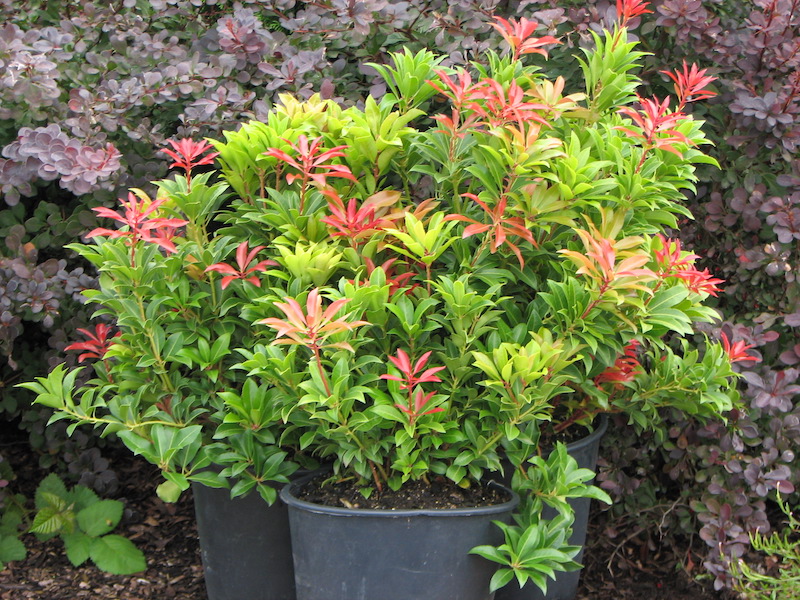Broadleaf evergreen shrubs are the workhorses of the ornamental garden. Their four seasons of interest give the garden structure even during the shortest days of winter. Pieris is hardy in zones 5 - 8 on the USDA plant hardiness map, with most cultivars surviving to -15 degrees F. Winter care does not have to be overly complicated for Pieris. The main issues to keep in mind are drainage and damage from harsh winds.

Protecting Pieris in Winter
Pieris blooms in early spring and will have set bud late in the summer or fall. The most significant winter damage that may occur is losing the flower buds to harsh freezing winds or an unusually late freeze in early spring. The best way to protect Pieris in winter is to plant the shrub in a sheltered spot that is out of the direct path of prevailing winds. If that is not possible, temporary covers made from horticultural fleece, burlap, or even old sheets can be used if there is a late freeze predicted.
Mulching the base of Pieris will help to insulate the roots during freezing temperatures. Mulches can be any organic material that will cover the bare soil. Decomposed straw, shredded leaves, arborist chips, or pine straw are all great choices that will insulate the plant in the winter and help to conserve moisture in the summer.
Cutting Back Pieris For Winter
Pieris does not need special pruning before winter. Pruning off dead, dying or damaged branches and flower buds should be done as the new growth emerges in the spring. Removing winter damage is important for keeping Pieris healthy and encouraging strong new growth. Weak, damaged growth also becomes susceptible to disease and pests.
Pieris Winter Care in Pots
Evergreen shrubs planted in containers need to be monitored for good drainage throughout the winter. Waterlogged pots will quickly kill the dormant root system. Moving a pot to a more protected location is the easiest solution. Evergreen shrubs also need to have a well-insulated root system through the winter. Pieris growing in a container will behave like it is growing in a slightly colder zone. In the colder growing zones, you can protect the pot by wrapping it in layers of burlap or horticultural fleece.

Watering Pieris in Winter
Pieris can be susceptible to drying out over the winter. Drying winds are usually the culprit and will dry out not just the leaves, but also the root system eventually. Regular watering in late summer and early fall will ensure that the shrubs enter their semi-dormant state fully hydrated. Keep shrubs well watered until the ground freezes. Some growing zones may not experience a hard freeze.
The soil will stay wet longer in cooler temperatures, and root rot is a risk. Always let the surface of the soil dry out in between waterings. Seasonal flooding should be monitored. Gardens that are well drained during the summer months could become boggy or waterlogged in areas with heavy winter rains.
Growing Pieris Indoors
Pieris is not a plant that needs to be brought indoors during the winter. Shrubs that are growing in pots can be moved to a more sheltered location, such as an unheated garage or greenhouse if they need extra protection. The climate inside a heated house is typically too warm and dry for most hardy plants to grow through the winter. Broadleaf evergreens do not go completely dormant during the winter, but they do need a period of cold and then gradual warming to bloom in the spring.
Steps To Care For Pieris in Winter
Protecting Pieris from the harsh conditions of winter is not difficult. Only a few conditions need to be monitored and adjusted.
Step 1 - Water Pieris well all of the way through fall until the first freeze
Step 2 - Plant in a spot that is sheltered from strong winter winds
Step 3 - Wrap the outside of containers with burlap or horticultural fleece to insulate the root system
Step 4 - Move any pot that is not draining well to an area where it will receive less moisture from heavy rains
Step 5 - Prune winter-damaged branches and blooms early in the spring as the new growth starts
 |
Author Robbin Small - Published 8-11-2022 |
